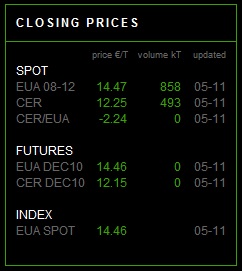NOTICE: THERE IS A NEWER ARTICLE ABOUT THIS SUBJECT
HOT NEWS: EUROPEAN COMMISSION APPROVES ROMANIAN GREEN CERTIFICATES RENEWABLE ENERGY
Continue to reading this item:
At the moment, Romania is not affiliated with the European System of Green Certificates due to the fact that the Romanian energy market has not as of yet met European standards. However, as soon as this happens and Romania enters the European System of Green Certificates, Romanian energy producers will be able to sell their green certificates on the European market, while Romanian energy distributors will be allowed to buy green certificates on the same European market. Electricity producers of renewable energy are able to sell the electricity they produce on the wholesale market at that market price. However, electricity produced in electric power stations having an installed power of less than 1 MW, may only be sold to suppliers that are licensed in the areas in which the electric power stations are located at regulated prices set by NAER at the national level. The trade and commercialization of green certificates and E-RES According to Law 220/2008, green certificates are traded on a centralized market, as well as a bilateral contracts market, where producers and suppliers of electricity from E-RES have entered into trading contracts for green certificates. As mentioned above, suppliers are required to annually purchase a certain number of green certificates relative to the amount of electricity annually supplied by them to their consumers. The law also provides for the trading of green certificates on the market until 2014.[IMPORTANT NOTE: THE LAW HAS BEEN CHANGED: CLICK HERE TO READ] Afterwards these values will either change, or if it has achieved its purposes the green certificates system will be abolished. Therefore, the minimum trading value is of €27/certificate, while the maximum trading value is of €55/certificate. The trading values are to be annually adjusted by the consumer price index for Romania. The certificates are thus sold on the market at the market price which cannot be lower than €27, but cannot exceed €55. – READ MORE –







